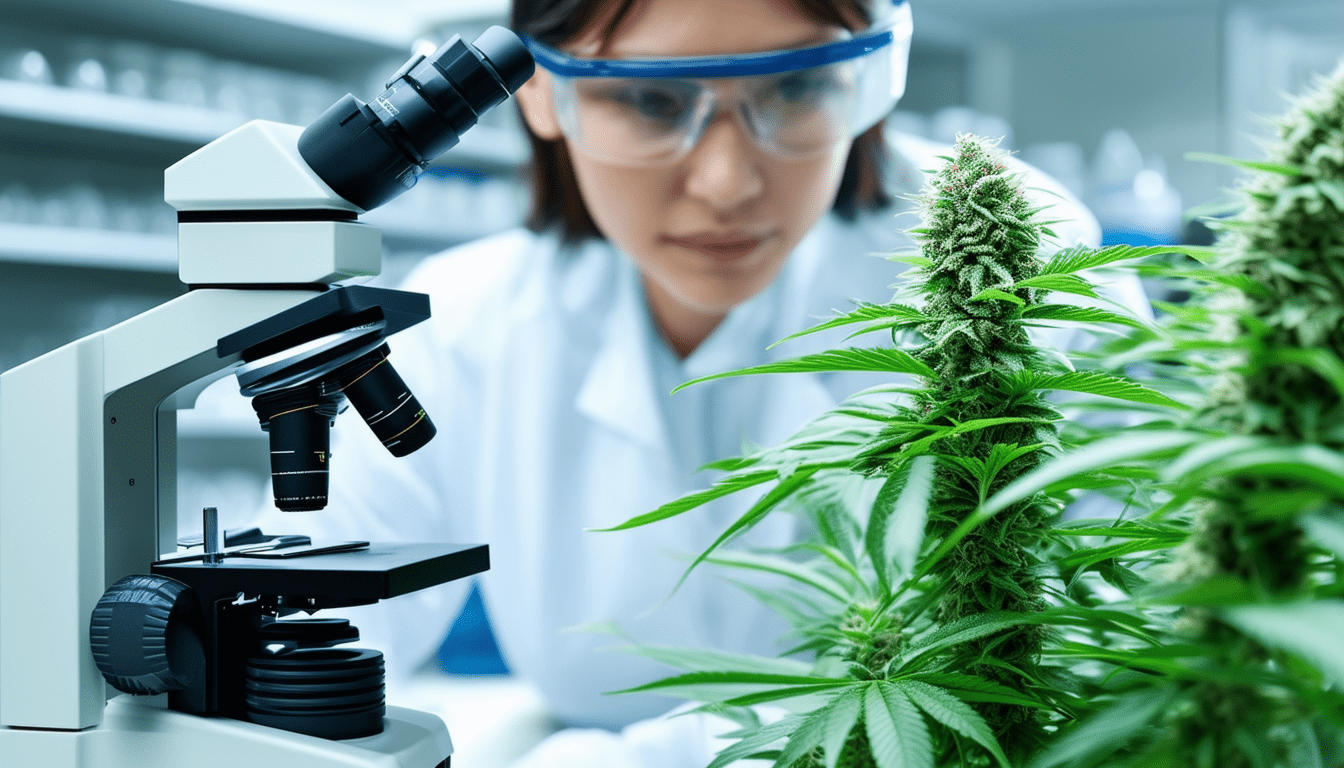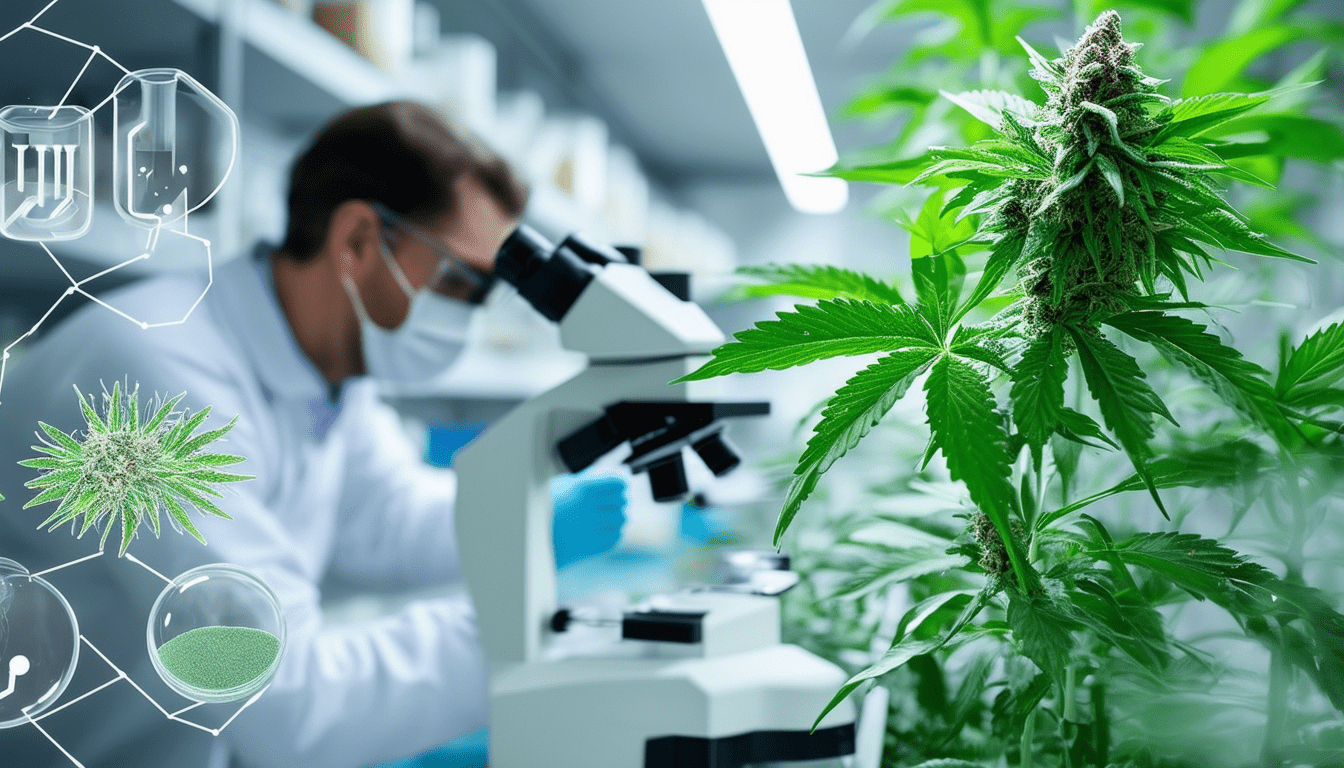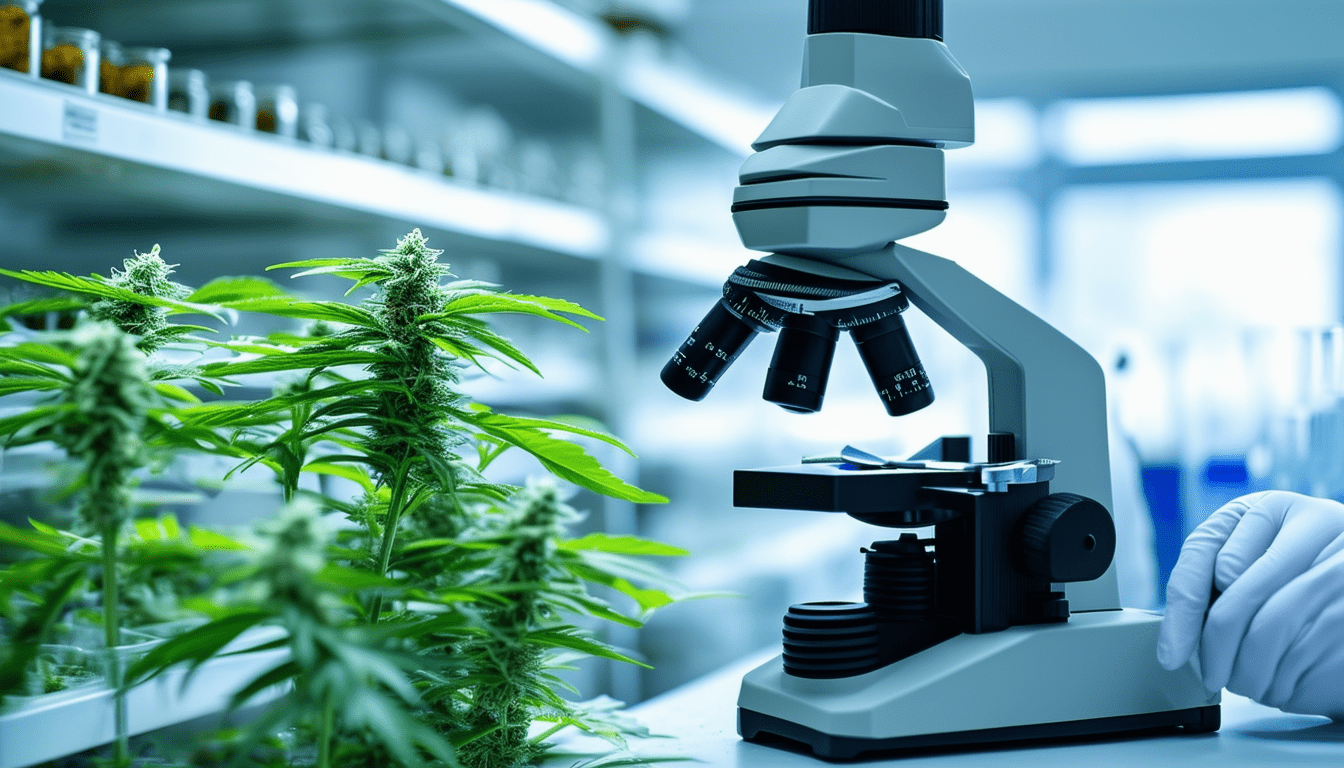Exploring Aspergillus Contamination in Cannabis: Implications for Immunocompromised Patients
|
IN BRIEF
|
As cannabis use continues to grow, particularly for medicinal purposes, the safety of its products becomes increasingly critical. One significant concern is the contamination of cannabis with Aspergillus, a type of mold that exists widely in the environment. While this organism may not pose a threat to healthy individuals, it can lead to severe health implications for those with compromised immune systems. Understanding the risks associated with Aspergillus contamination in cannabis is essential to ensure the safety and well-being of vulnerable populations, especially as the demand for medical cannabis rises.

The presence of Aspergillus, a ubiquitous genus of mold, in cannabis products is a growing concern, particularly for individuals with compromised immune systems. This article delves into the contamination of cannabis with Aspergillus, highlighting the potential health risks posed to immunocompromised patients, the environmental factors that promote mold growth, and essential prevention and monitoring strategies within the cannabis cultivation industry.
Understanding Aspergillus and Its Environmental Ubiquity
Aspergillus is a genus consisting of over 300 species, many of which are pathogenic to humans and animals. These molds are commonly found in various organic environments, such as soil, decaying vegetation, and air. While healthy individuals can typically tolerate incidental exposure to Aspergillus, the implications are markedly different for those with weakened immune systems.
Understanding the conditions that facilitate the growth of Aspergillus is critical for preventing contamination in cannabis. Its spores can proliferate in environments with high humidity and temperatures favorable for cannabis cultivation, increasing the risk that patients using these products may be exposed to harmful levels of the mold.
Health Risks for Immunocompromised Patients
The health risks associated with Aspergillus contamination in cannabis are particularly concerning for immunocompromised populations. This includes individuals undergoing treatments such as chemotherapy, those living with HIV/AIDS, or patients on immunosuppressive medications after organ transplants.
Inhalation Exposure and Resulting Conditions
One of the primary routes of exposure to Aspergillus is through inhalation, either by smoking or vaporizing contaminated cannabis products. Inhalation can lead to serious conditions such as invasive aspergillosis, where mold spores invade lung tissue, leading to potentially life-threatening respiratory infections. Symptoms include fever, chest pain, and difficulty breathing.
Allergic Reactions
Aside from serious infections, immunocompromised patients may also experience allergic reactions upon exposure to Aspergillus spores. Symptoms can range from mild respiratory discomfort to severe reactions such as allergic bronchopulmonary aspergillosis (ABPA), which can result in lung inflammation and long-term damage.
Cultivation and Environmental Factors
The cultivation environment of cannabis plays a crucial role in the likelihood of Aspergillus contamination. Factors such as humidity, temperature, and air circulation are significant contributors to mold growth. Maintaining proper conditions is essential to mitigate the risks associated with Aspergillus proliferation.
Humidity and Temperature Control
Aspergillus spores thrive in environments with relative humidity above 60%. Cannabis cultivators must ensure optimal humidity and temperature levels to prevent moisture buildup, especially during critical growth stages such as flowering, which heightens vulnerability to contamination.
Ventilation and Air Circulation
Proper air circulation is vital in reducing humidity and preventing mold growth. Cultivation environments that lack adequate ventilation may experience stagnant air pockets, which can increase humidity levels and further promote Aspergillus spores’ growth.
Preventative Measures in Cannabis Cultivation
The potential health risks associated with Aspergillus contamination necessitate comprehensive preventative measures in cannabis cultivation. It is crucial for cultivators to implement rigorous sanitation protocols, effective monitoring strategies, and consistent environmental controls to minimize contamination risks.
Sanitation Practices
Regular cleaning and sanitizing of cultivation equipment, tools, and growing spaces are essential practices. Removing organic debris can prevent Aspergillus from accessing potential breeding grounds. Additionally, cultivators should ensure workers adhere to hygiene protocols, reducing the risk of contaminating the growing environment.
Monitoring Techniques
Routine environmental monitoring for signs of Aspergillus contamination allows for early detection and intervention. Visual inspections for discoloration, musty odors, and other symptoms are critical, but implementing advanced environmental sensors provides real-time data, ensuring rapid response to potential contamination.
Regulatory Perspectives and Industry Standards
As concerns grow about Aspergillus contamination in cannabis, the cannabis industry must adhere to stringent regulatory standards to ensure product safety. Various regions have implemented regulations requiring mandatory testing for microbial contaminants, including specific limits for Aspergillus in cannabis products.
US Regulations
In the United States, cannabis regulations vary by state, with some states imposing stringent microbial testing requirements and limits for Aspergillus. While the FDA has not established federal regulations due to the classification of cannabis as a Schedule I substance, state regulations increasingly focus on product safety.
Canadian and European Guidelines
In Canada, Health Canada oversees strict guidelines for microbial contamination, mandating microbial testing for cannabis products, including Aspergillus limits. Similarly, European guidelines stipulate rigorous testing in countries where medical cannabis is legal, highlighting the global effort to ensure safe cannabis for patients.
Comparison of Aspergillus Contamination Risks in Cannabis for Immunocompromised Patients
| Aspect | Details |
| Source of Contamination | Soil, air, and decaying organic matter during cultivation. |
| Health Risks | Invasive aspergillosis, allergic reactions, and chronic pulmonary aspergillosis. |
| Vulnerable Populations | Individuals on immunosuppressive therapy, cancer patients, and HIV/AIDS patients. |
| Symptoms of Infections | Shortness of breath, cough, fever, and chest pain. |
| Prevention Strategies | Controlling humidity, maintaining air circulation, and ensuring sanitation. |
| Post-Harvest Solutions | X-ray irradiation and gamma irradiation for decontamination. |
| Regulatory Standards | Mandatory testing for microbial contamination in legalized regions. |
| Monitoring Techniques | Use of environmental sensors for real-time data tracking. |
| Consumer Awareness | Importance of sourcing from reputable producers and understanding risks. |

Aspergillus contamination in cannabis poses significant health risks, particularly for immunocompromised patients. This fungus, which can thrive in various environments, has become a pressing concern within the cannabis industry. Understanding the nature of this contamination, its implications for vulnerable populations, and the measures taken within the industry are vital for ensuring safe cannabis consumption.
Understanding Aspergillus
Aspergillus is a genus of mold consisting of over 300 species, with many pathogenic to humans. Common species such as Aspergillus fumigatus and Aspergillus flavus are especially harmful to those with weakened immune systems. Although Aspergillus molds are naturally found in soil and decaying matter, their presence in cannabis products can lead to serious health risks for consuming patients.
The Cultivation and Processing of Cannabis
During the cultivation and processing stages, Aspergillus spores can infiltrate cannabis plants. Factors such as humidity, temperature, and poor air circulation can promote mold growth, particularly in indoor cultivation settings. It is essential for growers to monitor these environmental conditions continuously to minimize the risk of contamination.
Environmental Factors That Promote Growth
High humidity levels, often exceeding 60%, are conducive to Aspergillus growth. Temperature also plays a significant role, with certain species thriving at temperatures optimal for cannabis growth. Growers must implement effective environmental controls to prevent the proliferation of this mold.
Sanitation Practices in Cannabis Production
Stringent sanitation measures are critical in minimizing Aspergillus contamination. Regular cleaning protocols for cultivation areas, tools, and equipment should be established. Additionally, growers must ensure that organic matter, which can serve as a breeding ground for mold, is promptly removed from the growing environment.
Health Implications for Immunocompromised Patients
The risks associated with Aspergillus contamination are particularly alarming for immunocompromised patients. Exposure can lead to infections such as invasive aspergillosis, which is life-threatening and primarily affects individuals undergoing treatments like chemotherapy or those living with chronic diseases. The inhalation of contaminated products can result in severe respiratory complications.
Allergic Reactions and Respiratory Issues
In addition to severe infections, some patients may experience allergic reactions when exposed to Aspergillus spores. Symptoms can range from mild issues, such as sneezing and nasal congestion, to severe conditions like allergic bronchopulmonary aspergillosis (ABPA), which can lead to chronic lung disease.
Preventative Measures for Patient Safety
Given the heightened risks, it is crucial for producers to incorporate thorough testing and decontamination protocols into their production processes. Regular monitoring of environmental conditions, alongside implementing post-harvest decontamination methods such as X-ray irradiation, are essential steps in safeguarding patient health.
The Role of Education and Awareness
Education plays a vital role in preventing Aspergillus contamination in cannabis. Both producers and consumers should be aware of the risks associated with mold contamination and the importance of sourcing cannabis products from reputable suppliers who adhere to strict safety protocols.
A comprehensive understanding of Aspergillus contamination and its implications for immunocompromised patients is crucial for ensuring the safety and quality of cannabis products. By addressing this issue proactively, the cannabis industry can enhance consumer trust and promote better health outcomes for vulnerable populations.
- Aspergillus Characteristics: A mold genus with over 300 species, some pathogenic to humans.
- Health Risks: Severe risk for immunocompromised individuals, leading to invasive infections.
- Contamination Sources: Occurs during cultivation, processing, and storage of cannabis products.
- Environmental Factors: High humidity and temperature promote mold growth in cannabis cultivation.
- Preventative Measures: Environmental controls and strict sanitation protocols are essential.
- Monitoring Techniques: Regular inspections and advanced testing for early detection of contamination.
- Health Implications: Allergic reactions, invasive aspergillosis, and chronic pulmonary aspergillosis can result.
- Importance of Decontamination: Advanced techniques like X-ray and gamma irradiation help maintain product safety.
As the cannabis industry continues to expand, concerns regarding Aspergillus contamination have become increasingly relevant, particularly for immunocompromised patients. This article delves into the presence of Aspergillus in cannabis products, its potential health risks, especially for vulnerable populations, and the importance of rigorous safety practices in cultivation and processing to mitigate these risks.
Understanding Aspergillus and Its Health Risks
Aspergillus is a mold that exists in various environments and can contaminate cannabis during its lifecycle. This mold can produce spores that, when inhaled or ingested, may lead to serious health complications, particularly for individuals with weakened immune systems. In immunocompromised patients, such as those undergoing chemotherapy, organ transplant recipients, or individuals with HIV/AIDS, exposure to Aspergillus can result in invasive aspergillosis, a life-threatening condition that can invade the lungs and other tissues.
The health risks associated with Aspergillus are exacerbated by the fact that many contamination incidents occur during the harvesting, drying, and storage processes. Without appropriate safety measures, there is a high likelihood that contaminated products will reach consumers, potentially leading to serious health consequences.
Importance of Safe Cultivation Practices
To combat the risks of Aspergillus contamination, stringent cultivation practices must be adopted. Environmental factors such as humidity, temperature, and air circulation play a crucial role in preventing mold growth. Cannabis plants thrive in warm and humid conditions, which are also optimal for mold. Maintaining relative humidity levels below 60% and carefully monitoring temperature ranges can significantly reduce the risk of contamination.
Moreover, implementing effective ventilation systems is fundamental. Proper air circulation prevents stagnant air pockets that could encourage mold growth, especially in densely packed areas of foliage. Additionally, routine maintenance of growing environments, including cleaning and sanitizing tools and equipment, is vital to minimize organic residues that could harbor mold spores.
Sanitation and Early Detection Measures
Alongside environmental controls, robust sanitation protocols are critical in mitigating the risk of Aspergillus contamination. Regular cleaning of cultivation areas and immediate disposal of plant debris can significantly help in controlling mold proliferation. Employees should also be directed to wear protective clothing and practice proper hygiene to limit the introduction of contaminants into the growing environment.
Implementing a thorough monitoring system for early detection of mold is crucial. Growers should conduct regular inspections of the plants and the surrounding environment to identify early signs of contamination. Advanced techniques, such as environmental sensors that monitor humidity and temperature levels in real-time, can provide valuable data that alert growers to potential problems before they escalate.
Consumer Education and Product Testing
Educating consumers about the risks associated with Aspergillus contamination is equally important. Patients, particularly those who are immunocompromised, should be advised to seek out cannabis products that have undergone rigorous testing for microbial contamination. Encouraging consumers to demand transparency in testing can lead to greater accountability within the cannabis industry.
Furthermore, cannabis producers should prioritize compliance with established regulations concerning microbial contamination. Routine testing of harvests and batches for the presence of Aspergillus and other potential contaminants is essential in ensuring product safety. Effective measures such as mandatory laboratory testing for cannabis products before market release can help safeguard public health.


Post Comment